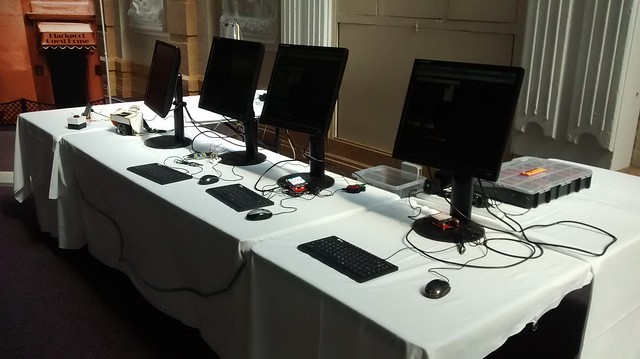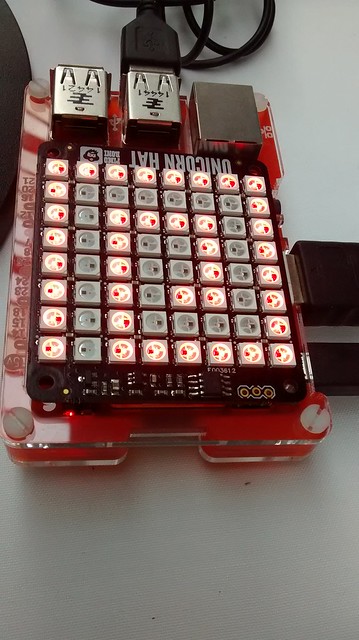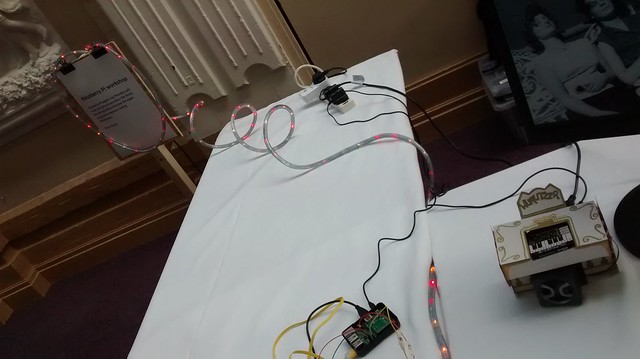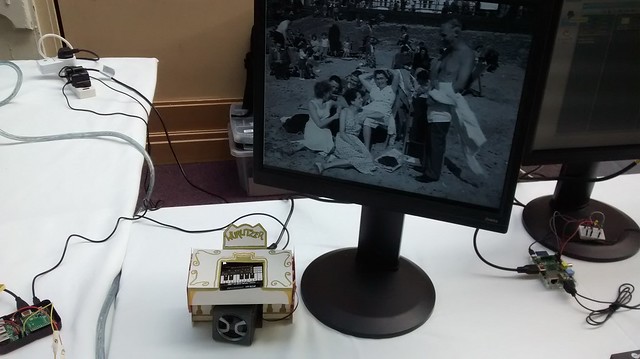Museum in the making

On August 28 and 29 I was part of the team showcasing the best of Blackpool’s history for an upcoming Blackpool Museum. The event was called “Museum in the making” and merged a typical museum exhibit structure with a series of interactive exhibits that mixed live actors with activities and games.
I was asked by Kerry Vasilou, a member of the team working on the bid, and my involvement was based upon my success with the Raspberry Pi sessions that I have been running across the Fylde and Wyre coast for the last 12 months.
Kerry asked me to create a series of interactive workshops based upon the Raspberry Pi but with the theme “light” so I used the Raspberry Pi to create four interactive projects based upon the Illuminations.
Project 1 - A simple Light Sequence

Using a Raspberry Pi model B and the fabulous ScratchGPIO software I created a simple light sequence via three LED on a breadboard. By controlling the pins on the Pi I as able to demonstrate how a light can be controlled using ScratchGPIO which is exceptionally accessible to children who loved hacking the lights and changing its sequence.
Project 2 - Design An Illumination

Using two Raspberry Pi 2 and the super bright Unicorn HAT from Pimoroni I adapted the example Unicorn Paint project so that the LEDs were at a safe brightness. I also cheekily edited the HTML file so that it referred to the application as an Illumination Designer.
Project 3 - Turn On The Illuminations

The famous Blackpool Illuminations have drawn millions of visitors to Blackpool but only a select few have ever turned them on...but what if we could all turn on the “lights”?
Well using a Raspberry Pi model B+, an Energenie board and receiving power socket, some DJ rope light and a hacked arcade button I created a remote method to turn on the rope light for a fixed amount of time. So once the visitor pressed the button the Energenie would come to life and turn on the remote socket, lighting the rope light for 30 seconds. Initially this was really good but I wanted to add a form of media playback to the project. So using an Adafruit HDMI backpack I adapted the Python code so that it launched the omxplayer application and played a short video of a journey down the Illuminations.
This project went down really well but I really want to adapt this further so that it is part of an exhibit that provides a framed backdrop of the Illuminations, including LEDs which visitors stand in front of. When the button is pressed a countdown takes place with supporting audio. When the count reaches zero, the lights turn on and the visitors have their photo taken. This photo is then tweeted using the official Blackpool Museum account and a supporting hashtag. A unique identifier could also be used so that the visitors can retrieve their photo.
Project 4 - Wurlitzer Organ Pathe Video Player

Saving the best till last! I wanted to create unique method of interacting with a media based exhibit. Typically media based exhibits use simple buttons/touchscreen or even standard keyboard/mouse input devices. I wanted to bridge the gap between old and new, computer and instrument so I created a simple Wurlitzer organ model which would house the PianoHAT add on for the Raspberry Pi. Each of the keys on the PianoHAT would trigger the playback of a short audio file with supporting audio from Blackpool. This would then fade out to a video from the British Pathe archives. The video would play and when finished the code would return to waiting for the visitor to press another key. This project worked really well, but I think for a future version I will need to create a stronger model, possibly on a larger scale. Also the code will need to be refined so that it is more robust and either prevents the visitor from selecting another video until the current playback is finished or by pressing another key the visitor can cancel the current playback and start the next video.
For all of these projects I can say that I am exceptionally proud, they worked really well and the visitors enjoyed touching possible exhibits. I am also very proud of the reliability of the Raspberry Pi which worked flawlessly with a very demanding number of visitors.
Could this see the Raspberry Pi being used in museums around the world? I certainly hope so.